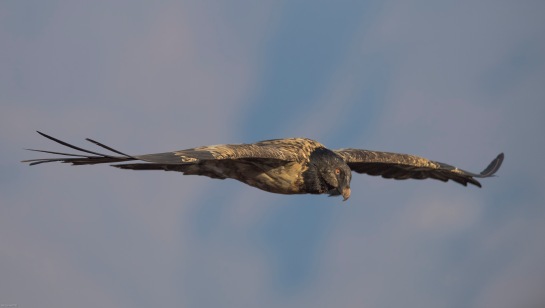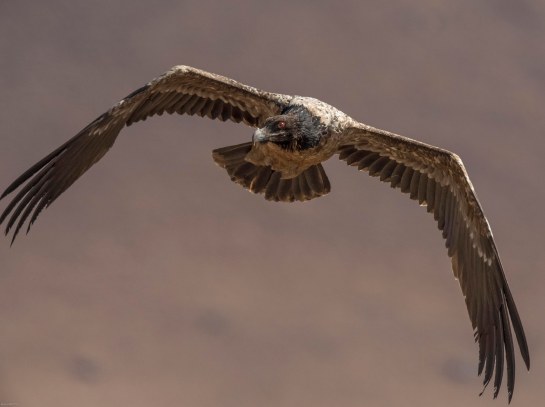This is the first post from my trip to Giant’s Castle in the uKhahlamba Drakensberg park in mid-July. Apart from the breath-taking beauty, a key attraction at Giant’s Castle was its vulture hide.
The uKhahlamba Drakensberg Park has Africa’s highest mountain range south of Kilimanjaro. It presents a formidable horizon of massive basalt cliffs in its northern reaches stretching to soaring sandstone buttresses in the south. When standing on one of the high points in the ‘Upper Berg’ looking down onto a boiling brew of clouds you will see jagged mountain spines rising above that boiling brew in what looks like the spines of a dragon’s back, giving them the Afrikaans name Drakensberg – Dragon Mountains. Those spines were seen by the ancient Zulus as spears and they called this mountain range uKhahlamba – the Zulu name for the barrier of spears.
Difficult terrain and unpredictable weather is the habitat for an array of unusual wildlife in this mountain region. This post shows images of one of its rarest South African wildlife members, the Bearded Vulture. According to International Union for the Conservation of Nature (IUCN), in southern Africa the population of Bearded Vultures is estimated at circa 100 breeding pairs. Separate research by Ezemvelo puts the population at around 145 pairs. We were privileged to see four juveniles and two adults soaring above the hide for two days.
“uKhahlamba – the basalt comprising most of the ‘High Berg’, is a brittle rock and its relative softness has resulted in jagged, vertical spines. These spines reminded the Zulu people of an impenetrable barrier often implemented on the battlefield. This is the Drakensberg, a barrier of spears.” ~Erwin and Nicoleen Niemand
“You’re off to Great Places!Today is your day! Your mountain is waiting, So… get on your way!”~ Dr. Seuss
As this juvenile was coming in to land it flared its wings and had its alulas out to maintain control at slowing airspeeds.
The alula is a bastard wing located between the arm wing and the hand wing.It is assumed to function similarly to a leading-edge slat that increases lift and delays stall.
“If you jump to conclusions, you make terrible landings.”
~Terry McMillan
The juvenile Bearded Vulture is much darker than the adult and it has a mostly black face but its black beard grows with age. The next image is of a fully fledged, sub-adult bird. The colouring on the breast feathers is a gorgeous mottled mix of browns and beiges. The juvenile also looks less thick set than the adult.
A juvenile Bearded Vulture soaring against a dry winter, but colourful background. It was mid-winter but there was no snow on the mountains. The weather forecast was for sunny skies and clear nights and a maximum temperature of one degree centigrade and minimum of minus six centigrade.
The reality was a cool two degrees as a minimum and 19 degrees maximum – idyllic winter weather with sunny skies.
We have been to the Vulture hide above Giant’s Castle rest camp three times, but this was the first time in winter.
Bearded Vultures in southern Africa breed in winter and are more likely to land in front of the hide to pick up the bones provided by the park.
To encourage these magnificent vultures to land we put out bones the park provides. While this is baiting, it has a conservation bias as these vultures are endangered in South Africa and their habitat loss requires food substitution.
The Bearded Vulture, like other vultures is a scavenger but it does not compete on a carcass like other vultures. Its diet consists mainly of bones (80-90 percent).
This vulture has stomach acid with a pH of about one so can digest the bone fragments in about 24 hours.
“One can never consent to creep when one feels an impulse to soar.”
~Helen Keller
These Bearded Vultures seem to be very wary birds. The six vultures we saw made numerous fly byes looking at the bones on the rocks in front of the hide but only two individuals landed on separate occasions on the first day. These vultures showed no aggression towards other birds such as ravens.
The White-necked Ravens were also not fussed by their large rival – perhaps because of safety in numbers. This adult Bearded Vulture did not manage to fly off with a bone. The dinner table was probably too busy and noisy for this normally solitary wind rider.
Unlike most vultures, the Bearded Vulture does not have a bald head which suggests a very different feeding method to the White-backed or Cape Vulture. This species is relatively small headed, but has a powerful and thick set neck and shoulders.
It is a big but stocky raptor with baggy leggings. This raptor’s thick plumage is presumably an adaption for the cold mountain air. It appears bulkier than other vultures and waddles when on the ground.
Its feet are large and powerful but are used for picking up big bones rather than killing.
“This mountain, the arched back of the earth risen before us, it made me feel humble, like a beggar, just lucky to be here at all, even briefly.”
~Bridget Asher
To watch this huge vulture gliding with such freedom in a huge open space with the imposing mountainous backdrop is inspiring.
Bearded Vulture are thought to spend 80 percent of their daylight hours soaring on the updrafts along mountain ridges.
The image below is of a sub-adult but it is an older bird as seen by its beard even though it has not yet taken on its adult plumage, which only comes through after about seven years.
“To soar, we must leave anything that weighs us down.”
~Saru Singhal
Although dissimilar, the Egyptian and Bearded Vulture each have a lozenge-shaped tail — unusual among birds of prey. The tail varies in length from 43 to 52 centimetres and is presumably shaped to provide additional lateral control in the turbulent mountain air upthrusts.
You will very rarely see these vultures flapping their wings and when they do it is mostly from the “hand wing”. It is the most spellbinding sight to watch this majestic bird glide across a two kilometre valley in a matter of seconds without any apparent movement of its wings other than control adjustments.
This adult Bearded Vulture landed on the rock about 50 metres below the hide. The adult is mostly dark gray, rusty and whitish in colour. Its back is grey-blue to grey-black. The creamy-coloured forehead contrasts against a black band across the eyes and lores and bristles under the chin, which form a black beard that give the species its English name.
Adult Bearded Vultures are variably orange or rust of plumage on their head, breast and leg feathers but this is actually cosmetic. Adults rub iron oxide rich soil into their feathers. After dust-bathing they preen their breast feathers with their feet. The richness of the colour of the breast feathers is thought to intensify with age.
The Bearded Vulture has an elliptical wing shape with a low aspect ratio. The aspect ratio is the ratio of wing length to wing depth. This low aspect ratio shape is ideal for soaring and also helps this large bird to take off without the need for a long taxi run to get airborne.
The threats these vultures face are direct and indirect poisoning, shooting, power-line collision and electrocution and habitat loss.Threats that have emerged and may be impacting on the species include food shortage, disturbance at nests by climbers and helicopters, indirect poisoning of carcasses with veterinary drugs and harvesting living birds for use in traditional medicine.
“No matter how sophisticated you may be, a large granite mountain cannot be denied – it speaks in silence to the very core of your being.”~ Ansel Adams
Like other vultures, the Bearded is a scavenger, feeding mostly on the remains of dead animals. It does not usually feed on carcass meat but around 70 to 90 percent of its diet is bones, getting its nutrition from bone marrow. The Bearded Vulture has learned to crack bones too large to be swallowed by carrying them in flight to a height of 50–150 metres above the ground and then dropping them onto flat rocks below, called ossuaries.
The impact on the ossuary smashes the bone into smaller pieces and exposes the nutritious marrow.
This is a big vulture with a wingspan of around 2.7 metres and is about 1.1 metres tall when standing.
This was one of the younger sub-adults ‘on finals’ and coming in to land. Only one juvenile landed in two days and it was on the ground for about thirty seconds.
This juvenile landed to pick up a bones we had put out for these vultures. It picked a point where there were no ravens to harass it.
These Bearded Vultures are very wary and will fly passed their food source many times waiting for hassle free landing.
These vultures have to compete with White-necked Ravens, Cape Vultures and Black-backed Jackals for their food at the hide.
This sub-adult managed to take off without incident. It will take this bone to an ossuary and drop it to fragment it into swallowable pieces.
These huge raptors do not get it all their own way. As in any situation where man interferes there are distortions. By leaving bones out for the vultures there are many other birds attracted by the marrow and fat on the bones.
The White-necked Ravens are protective of their turf and on occasions prevent a Bearded Vulture from landing to pick up a bone. This juvenile successfully landed and picked up its cargo, but even in flight the ravens harassed this cargo carrier for some distance.
“Thousands of tired, nerve-shaken, over-civilized people are beginning to find out going to the mountains is going home; that wilderness is a necessity…”
~John Muir
The Bearded Vulture is monogamous. In Southern Africa it mates and lays its eggs in winter and raises it young in summer. Normally, siblicide ensures one chick survives.
Modern jetliners have adopted the same wingtip design as seen on the wings of this Bearded Vulture. The winglet is upturned at the end of the wing.
This upturned winglet shape reduces the drag across the wing by partial recovery of the tip vortex energy, improve handling and increase the effective aspect ratio of the wing.
“Biomimicry is … the conscious emulation of life’s genius.”~Janine Benyus
The Bearded Vulture is classified as near-threatened internationally in the IUCN Red List as assessed by Birdlife International. There are an estimated up to 10,000 individuals found in Asia, Africa and Europe.
The bearded vulture is only found in the Drakensberg in South Africa/Lesotho and is classified as locally threatened.
Under normal circumstances we would never feed the wildlife and would never be allowed to feed the wildlife in a national park. In the case of the vulture hide at Giant’s Castle, the park provides bones to ensure these endangered giants have supplemented food. The hide is also a photographers paradise. Being up on the side of the mountain in dead quiet but for the wind and the sound of Red-winged Starlings and ravens is perfect.
“I would rather own little and see the world, than own the world and see little of it.”
~Alexander Sattler
Explore, seek to understand, marvel at its inter-connectedness and let it be.
Have fun,
Mike
Mike Haworth
My name is Michael Singleton Haworth, nicknamed “Howie”. I was born and raised in Zimbabwe and now live in South Africa. Zimbabwe was a fantastic place for youngsters to grow up, where opportunities abounded to get into the bush. I have two great ‘shamwaris’, Mike Condy and Adrian Lombard, whom I known for around 60 years. All of us have a great love of the bush and birds.


























Leave a Reply